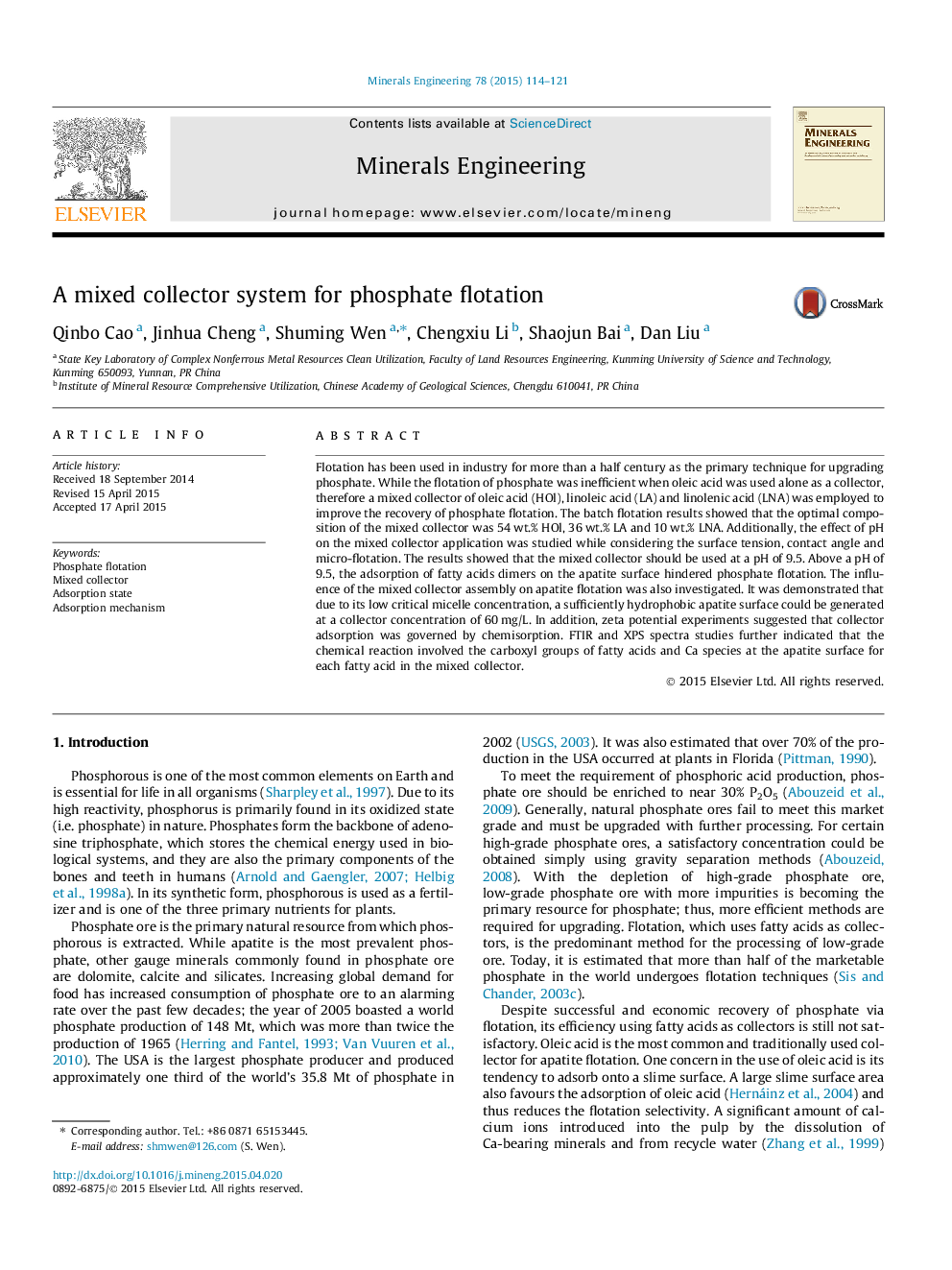| Article ID | Journal | Published Year | Pages | File Type |
|---|---|---|---|---|
| 233052 | Minerals Engineering | 2015 | 8 Pages |
•Optimal composition of the mixed collector was defined for phosphate flotation.•The mixed collector exhibited superior ability to collect phosphate at a pH of 9.5.•The collector adsorption at apatite surface was improved in mixed collector system.•The collector ions were chemisorbed onto the calcium sites on the apatite surface.
Flotation has been used in industry for more than a half century as the primary technique for upgrading phosphate. While the flotation of phosphate was inefficient when oleic acid was used alone as a collector, therefore a mixed collector of oleic acid (HOl), linoleic acid (LA) and linolenic acid (LNA) was employed to improve the recovery of phosphate flotation. The batch flotation results showed that the optimal composition of the mixed collector was 54 wt.% HOl, 36 wt.% LA and 10 wt.% LNA. Additionally, the effect of pH on the mixed collector application was studied while considering the surface tension, contact angle and micro-flotation. The results showed that the mixed collector should be used at a pH of 9.5. Above a pH of 9.5, the adsorption of fatty acids dimers on the apatite surface hindered phosphate flotation. The influence of the mixed collector assembly on apatite flotation was also investigated. It was demonstrated that due to its low critical micelle concentration, a sufficiently hydrophobic apatite surface could be generated at a collector concentration of 60 mg/L. In addition, zeta potential experiments suggested that collector adsorption was governed by chemisorption. FTIR and XPS spectra studies further indicated that the chemical reaction involved the carboxyl groups of fatty acids and Ca species at the apatite surface for each fatty acid in the mixed collector.
